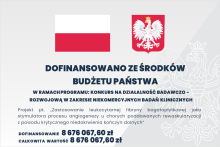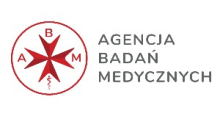The use of platelet-rich leukocyte fibrin as a stimulator of the angiogenesis process in patients undergoing revascularization due to critical ischemia of the lower limbs


Medical Research Agency
Medical Research Agency
Occlusive atherosclerosis of the arteries of the lower extremities is a common lifestyle disease from the group of cardiovascular diseases, which is associated with high morbidity, mortality and a significant reduction in the quality of life of patients. It is estimated that currently approximately 202 million people worldwide suffer from lower limb obliterating atherosclerosis, and in many of them the progression of the disease leads to the loss of a limb. The incidence of the disease varies, depending on the literature, from 4.3% to 57% and depends on the adopted assessment criteria, age and risk factors in individual social groups. Advanced age, male gender, coexisting diabetes and smoking are associated with a much higher risk of morbidity.
Currently, the first line of treatment is endovascular or surgical bypass grafting. Although the technical success of such treatment is relatively high, the long-term limb salvage outcomes and the rates of limb-salvage survival are no longer satisfactory. Previous attempts to use mesenchymal stem cell therapy did not significantly affect the percentage of saved limbs, but were only used in patients for whom there was no option for revascularization. The formation of a new vascular bed, or angiogenesis, is a complex, multifactorial process, and although it is possible to grow a wide variety of stem cells responsible for the angiogenesis process, from vascular endothelial progenitor cells (EPCs), to angiogenesis-promoting hemangioscites (HPCs), to vascular stabilizing mesenchymal stem cells (MSCs) still fail to successfully and predictably initiate angiogenesis in critically ischemic tissues. It is suggested that the reason may be:
1) implantation of single-line cells with a complex and not fully understood mechanism of cell-protein interaction during angiogenesis, 2) donor cell anergy resulting from chronic inflammation in generalized atherosclerosis, 3) implantation of cells that die without access to blood and metabolic substrates before they start the process of angiogenesis, 4) implantation of allogeneic cells, which are quickly rejected by the host organism without exerting a therapeutic effect.
At the same time, a number of experimental studies have recently appeared showing the remarkably angiogenic effect of platelet-rich leukocyte fibrin (L-PRF) in initiating the development of new vascular beds. L-PRF is an autologous medicinal product isolated directly from the patient's blood by centrifuging thrombocytes and leukocytes from red blood cells and suspending them in a fibrin gel. This autologous product has angiogenesis-inducing properties, accelerating healing and modulating the immune response.
In addition to restoring temporary vessel patency, it is expected that we will significantly accelerate the process of secondary angiogenesis in the ischemic limb and suppress the perivascular inflammatory response to the revascularization procedure itself. We assume that this will largely contribute to a significantly longer period of asymptomatic or completely asymptomatic disease course, which will, secondarily, result in a higher percentage of saved limbs and possibly a reduction in mortality in this group of patients. The aim of the study is to develop new intervention methods in the treatment of critical ischemia of the lower limbs with the use of a medicinal product such as LPRF.
